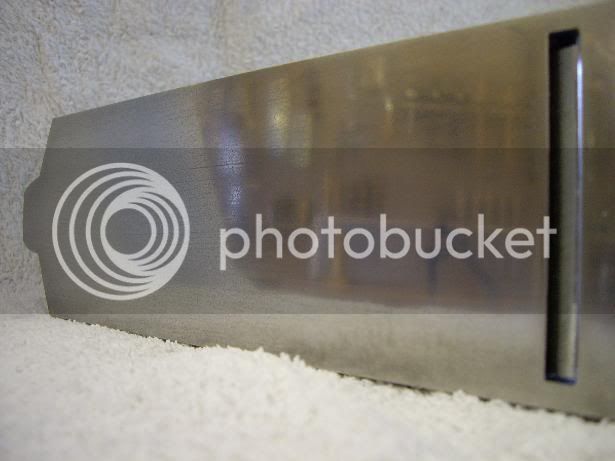engineer one
Established Member
told you that i had actually made some things for public consumption in the past. these two are quite old, but in someones house, so i guess on public display.
we have a tv cabinet made of beech veneered mdf with two pocket doors and a turntable. it is quite old, designed in the days when big tellies were really big, as were video recorders.
now i would make it about even lower than the 900mm it is, and make the turntable section smaller, but at the time i had to get the timber cut to size at the woodyard, so had less control. joints are all biscuits, no ventilation problems due to the big hole in the back. client wanted the lowest unit for a then large goodman tv about 28 inch.
second item is a drinks cabinet. much more suited to this place.
client had originally bought a vintage rustic bar from spain. got fed up but wanted to keep the spirit. so i cut it in half, and rebuilt it around a lower draw of reclaimed floor panels, and a top out of beech mdf, with half round beading pinned on. the back is made out of shiplapped reclaimed pine.
and the door is more fun. as you can see it is frame and panel, but the panels were reclaimed parquet floor panels cut down. the design is actually the way in which after the polish was sanded off, the parquet took the dark stain. i used rustins dark oak with a little light oak.
anyway they work, the client is happy, still, and the drinks item actually holds more booze than it did when a bar, but takes up less space. :lol:
 [/url]
[/url]

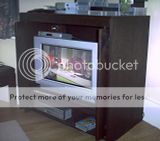

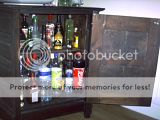

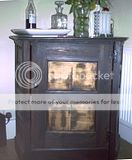
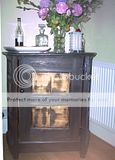
so the fact is i have made somethings other than bunches of bookshelves.
but always before out of boards. now this hand work is becoming more interesting, although i'll never make any money at it :? too slow.
finally i know the conventional way to make a box is to join boards, make a solid box, then cut the join, but if you have two boards the same width, and you want the box to have both halves the same width, is there another way to join it without the same effort? i understand the idea is to ensure that the box is parallel etc, but wonder whether there is another way.
thanks for looking
paul :wink:
[/img]
we have a tv cabinet made of beech veneered mdf with two pocket doors and a turntable. it is quite old, designed in the days when big tellies were really big, as were video recorders.
now i would make it about even lower than the 900mm it is, and make the turntable section smaller, but at the time i had to get the timber cut to size at the woodyard, so had less control. joints are all biscuits, no ventilation problems due to the big hole in the back. client wanted the lowest unit for a then large goodman tv about 28 inch.
second item is a drinks cabinet. much more suited to this place.
client had originally bought a vintage rustic bar from spain. got fed up but wanted to keep the spirit. so i cut it in half, and rebuilt it around a lower draw of reclaimed floor panels, and a top out of beech mdf, with half round beading pinned on. the back is made out of shiplapped reclaimed pine.
and the door is more fun. as you can see it is frame and panel, but the panels were reclaimed parquet floor panels cut down. the design is actually the way in which after the polish was sanded off, the parquet took the dark stain. i used rustins dark oak with a little light oak.
anyway they work, the client is happy, still, and the drinks item actually holds more booze than it did when a bar, but takes up less space. :lol:








so the fact is i have made somethings other than bunches of bookshelves.
but always before out of boards. now this hand work is becoming more interesting, although i'll never make any money at it :? too slow.
finally i know the conventional way to make a box is to join boards, make a solid box, then cut the join, but if you have two boards the same width, and you want the box to have both halves the same width, is there another way to join it without the same effort? i understand the idea is to ensure that the box is parallel etc, but wonder whether there is another way.
thanks for looking
paul :wink:
[/img]

































